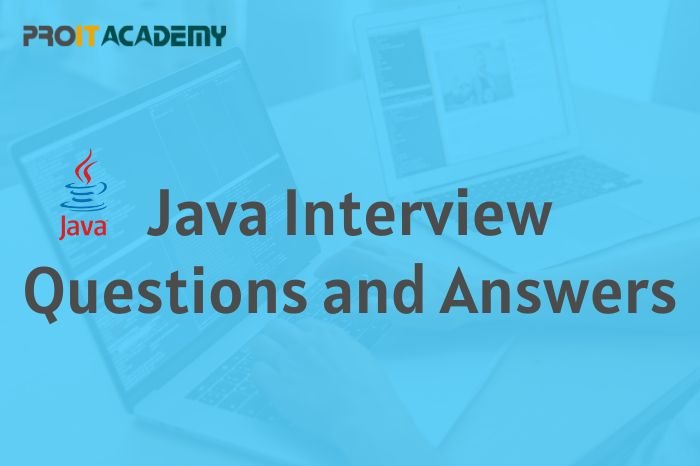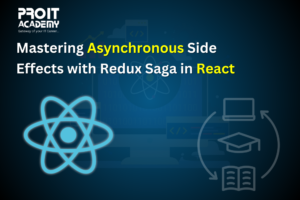What is Java?
Ans: Java is a programming language developed by Sun Microsystems as an alternative to C and C++. It is a complete superset of the popular Java platform, with the added advantage of being Turing complete.
Java was designed to be both easy to learn and hard enough to teach, and its rapid evolution has made it one of the world’s most widely used and successful programming languages.
Java was created with an unusual focus on high-level functionality over low-level capabilities, making it ideal for high-level applications such as web services or game engine development. Its strong emphasis on concurrency makes it suitable for concurrent development, where many tasks are performed simultaneously or in parallel.
What are the fundamental differences between C and Java?
Ans:
| C- Language | Java |
| Dennis M. Ritchie developed the C language in the year 1972. | James Gosling developed Java in the year 1995. |
| C is Procedural-Oriented Language | Java is an Object-Oriented Language |
| Functions are an important part of the C language. | Objects are an important part of the Java language. |
| C is a middle-level language | Java is a high-level language. |
| C support OOPS Concepts. | Java supports OOPS concepts and Inheritance plays a major role in it. |
| Memory is allocated in C by using Malloc. | Memory is allocated through a new keyword. |
| C does not support Threading | Java supports Threading Concept |
| C is not portable | Java programming language is portable |
| Default members are public in the “C” Programming Language | Default members are private in the Java Programming Language |
What are the essential features of Java?
Ans: The main features of Java are as follows:
- It is an open-source programming language that is used by developers all over the world.
- Java supports multiple inheritances through interfaces.
- Here in Java, the compiled code is first converted to bytecode, and then it can be executed or run on any platform with the Java Virtual Machine (JVM).
- Java provides a rich set of tools and support for development and usage, making it very easy to develop and use applications in Java.
- The software developers can smoothly perform multiple tasks simultaneously in Java.
- The language is easy to learn, with ample documentation available online and in bookstores.
- Java’s programming language provides high performance.
- The programming language is highly secure and provides a secure platform for developing more secure applications.

Book Your Time-slot for Counselling !
What is a Java Virtual Machine?
Ans: A “virtual machine” is a type of software that simulates the operation of a real computer by providing an abstraction over actual machine operations.
A virtual machine allows programmers to create much easier and faster programs to understand than their source code. It also allows them to focus on the essential parts of their program, such as code structure and programming logic, without having to worry about memory management or process safety.
A virtual machine can be used for both development and production purposes. As its name suggests, it provides an illusion of real-world functionality by mimicking the capabilities of a real computer.
What are memory areas allocated by the Java Virtual Machine (JVM)?
Ans: There are five memory areas that the JVM allocates, and they are:
- Class Area
- Heap
- Stack
- Native Method Stack
- PC Register
What is the Java Runtime Environment? And its components.
Ans: The Java Runtime Environment (JRE) is an open-source software development platform that runs the Java programming language in the browser. It is a cross-platform development tool that can be used to develop desktop and mobile applications.
The JRE contains the following components:
- The Java Runtime Environment (JRE): It includes all of the tools required to run any Java program, such as a JDK and JSE shared library runtime, command-line tools, and other file-related files. This component is usually installed next to the installation of Windows or Linux on your system.
- The Java Virtual Machine (JVM): It contains the code for running any program that uses virtual machines on your systems, such as web servers, database servers, and enterprise applications. This component is usually installed next to Windows or Linux on your system.
Define variables in Java.
Ans: A variable in Java is a primary storage unit of a program that holds the value during the program’s execution.
Defining variables in Java is simple, and the following are some helpful hints:
First, make sure that your variables are indeed valid. If they’re invalid or not recognized by your code, you’ll have to throw the error and go on without it.
Next, create a variable name that reflects the value of the variable you’re defining and use it throughout your code. This will help you track what’s what throughout your program and make changes easier to read and maintain over time.
Example: int a = 100;

Give the difference between Java and C++.
Ans:
| Java | C++ |
| Java is platform-independent | It is platform dependent |
| is Java does not supported the Goto statement | It supports the Goto statement |
| Java supports Multiple inheritances through Interfaces | C++ supported by Multiple inheritances |
| structures and unions not supported by Java | It supports unions and structures |
| Interpreter and Compiler used by Java | It uses the compiler |
| Java has built-in support for threading | C++ does not offer any built-in facility for threading |
What are the different kinds of variables in Java?
Ans: There are mainly three different types of variables available in Java, and they are:
- Static Variables: A static keyword is a keyword that is defined or declared with the static keyword. It cannot be made a local variable, and the essential point to note is that the memory can be allotted only once.
- Local Variables: A “local variable” can be defined as a variable that is defined and declared inside the body of the methods or functions.
- Instance Variables: Instance variables are the variables that are defined or declared inside the class but outside the body of the function. Furthermore, an instance variable cannot be described as static and cannot be shared among others.
What is typecasting in Java?
Ans: Typecasting is a Java feature that enables you to easily change the type of an object without changing its internal data structures.
Typecasting allows you to easily change the types of objects in your code without changing their internal data structures. It allows you to easily switch between different kinds of things without explicitly setting them up in memory.
What is type conversion?
Ans: Type conversion is more than converting one data type into another, and that too by the compiler.
There are two types of type conversions, and they are:
- Implicit type conversion
- Explicit type conversion
What are primitive data types in Java?
Ans: A primitive data type is a type of data that is not modified by the value being stored in its field. Primitive data types store information that cannot be altered by the value stored in its area.
Primitive Data Types are the most fundamental data types available in Java. It includes Int, Char, Float, Double Float, Long, Short, and Boolean.
List all the default sizes of primitive data types.
Ans:
| Data Type | Default Size |
| Int | 4 bytes |
| Char | 2 bytes |
| Byte | 1 byte |
| Byte | 2 bytes |
| Long | 8 bytes |
| Float | 4 bytes |
| Double float | 8 bytes |
| Boolean | 1 bit |
The brief significant difference between Java and Python Programming Language.
Ans:
| Python | Java |
| Python is Interpreted programming language, in which | Java is a compiled language. |
| In Python, the programs can be run using a Python interpreter. | Here in Java, the compiled code is first converted to bytecode, and then it is executed/run on any platform with Java Virtual Machine (JVM). |
| Python encourages imperative, object-oriented, functional, and procedural paradigms. | Java was created by James Gosling for Class-based and Object-oriented paradigms. |
| Python keeps the code concise, clean, and readable. | The developers need more time is needed to make the code readable. |
| Python is dynamically typed. | Java is a strongly typed language. |
| Python is pretty slower than Java | Java is faster than Python |
| In Python, you do not need to declare variables | In Java, the compiler cannot change the data type of the variable. |
What is the Unicode system in Java?
Ans: The Unicode system in Java is used to represent characters in a way that is compatible with character sets other than the one used on your computer, such as the ISO 8859-1 standard.
The Unicode system provides information about the 32-bit and 64-bit characters available in Java apps. It also includes information about creating and using Unicode strings, which are data structures containing both Unicode strings and ASCII text.
What types of operators are available in Java?
Ans: 8 types of operators in Java, and they are listed below:
- Arithmetic operators
- Assignment operators
- Logical operators
- Relational operators
- Bitwise operators
- Unary operators
- Ternary operators
- Shift operators
List all the different logical operators in Java.
Ans: There are three other logical operators in Java.
- Logical OR
- Logical NOR
- Logical AND
What is the difference between the ++a and ++a increment operators?
Ans: ++a is a prefix increment, and a++ is the postfix increment. The prefix increment is generally used to return the value after the increment of the current value. On the other hand, in postfix increment, the value is returned before incrementing the current value.
List all the bitwise operators in Java.
Ans: Bitwise operators are primarily used to work on bits. Here are some of the famous and essential Bitwise operators listed below:
- Unsigned left shift ()
- Unsigned right shift (>>>)
- Bitwise OR (A&B)
- AND (A|B) in bits
- Bitwise XOR (AB)
- Bitwise Complement (A)
- Left shift (A2)
- Right dress (A>>2)

Do you need help to create your career path ?
What are the various access specifiers present in Java?
Ans: There are four access specifiers in Java, listed below. Kindly have a look at it:
- Public: “public” means that any class or function in a Java program can access it. If any method, class, or variable is used with public specifiers, then they are accessible by any type in Java.
- Private: The methods or functions marked as confidential can only be accessed or utilized within the same class.
- Protected: The variables, methods, and classes classified as private can only be accessed within the same class of the same package.
- Default: Under the default specifiers, all the classes, variables, and methods or functions are in the default range. Moreover, the default can be accessed only within the package.
What are the selection statements in Java?
Ans: A selection statement in Java is essential because it is used to provide programme control for a particular condition that is either true or false. Furthermore, these selection statements are also termed “conditional statements.”
In Java, there are three (3) selection or conditional statements, which are discussed further below:
- If statement
- If-else statement
- Switch statements
What is the list of different types of iterative statements in Java?
Ans: Iterative statements, also known as loops, are codes that repeat themselves until the condition is met.
In Java, there are three (3) loops that are commonly used:
- For loop
- While loop
- Do-while loop
Jump statements in Java
Ans: Jump; the name means moving from one place to another. In the Java programming language, jump statements allow you to transfer control to another part of the programme based on a condition. Break and Continue are the most important Java programming language jump statements.
Types of constructors in Java
Ans: There are mainly two types of constructors in Java, listed below:
- Default Constructor: The default function Object () { [native code] } in Java does not accept any value and is mainly used to initialize the instance variable with some default values. If there is no function Object () { [native code] } declared in the class, the Java compiler invokes a default constructor.
- Parameterized Constructor: The parameterized function Object () { [native code] } initializes the instance variables with some given values, and it is an important function Object() { [native code] } as it accepts the arguments called parameters.
Want to start a career as a Java Developer and master the skills from experts? Do Check out Java Classes in Pune now.
Define the static method.
Ans: A static method in Java belongs to the class instead of the object. In the Java programming language, Java developers do not need to create the thing to call the static methods or functions.
List the restrictions of Java static methods.
Ans: The primary and most important restrictions to the static methods are shared below:
- The static method cannot use non-static data members.
- Static functions and methods cannot call the non-static method directly.
List the differences between the static (class) method and the instance method.
Ans:
Static or class method:
- It is a method that is declared static.
- Java developers do not need to create the objects to call the static methods.
- Non-static members cannot be accessed directly in the static block.
Instance method:
- It is a method that is not declared static.
- The instance methods can access both static and non-static variables. Java developers require an object to call the instance methods.
Brief “this” keyword in Java
Ans: The “this” keyword in Java is a reference variable that refers to the current object. In Java, the “this” keyword can refer to the current class and pass as an argument to functions or methods.
Prime uses of this keyword in the Java programming language
Ans: The prime uses of this keyword in the Java programming language are listed below:
“This” can
- refer to the current class instance variable.
- Invoke the current class function
- pass as an argument.
- pass as an argument in the function Object() { [native code] } call.
Define inheritance in the Java programming language.
Ans: The inheritance feature in the Java programming language is a feature that allows you to extend the functionality of your program without having to subclass it.
Features of Inheritance can be utilized:
- By extending the base class of your program with new methods and features specific to the subclass’s needs.
- Adding functionality previously provided by a subclass but has been added via an inherited method or property.
Q. Distinction between a while loop and a do-while loop
Ans:
“While Loop”: A while loop is a Java programming language feature that helps manage tasks. A while loop is used to help ensure the progress of a task and can be used in many situations.
A while loop starts when the condition is true and continues until the condition is false or an error occurs. The condition can be any type of data that needs to be tracked, such as time or steps taken by a task.
Do-while Loop: On the other hand, in the case of the do-while loop, first, the condition is processed, and then the condition is tested at the end of the loop.
What do you mean by “comments in Java”? Explain.
Ans: Comments can be explained as the statements within the code that are not run or executed by the Java compiler. It states some sort of information about the class, methods, etc. There are types of comments, such as single-line, multi-line, etc.
Brief OOP concepts
Ans: OOPs is an object-oriented programming language that mostly works with objects. It implements entities like objects, classes, inheritance, polymorphism, etc. Some important OOP concepts in Java are shared below:
- Class
- Object
- Abstraction
- Encapsulation
- Inheritance
- Polymorphism
What is an abstraction in Java?
Ans: Abstraction Java programming is a language that provides high-level control and flexibility in programming while being easy to learn and use. It allows programmers to express their code in reusable components rather than individual functions or methods.
In a nutshell, abstraction is concealing unimportant data while displaying important data.
What is encapsulation in the Java language?
Ans: Encapsulation can be defined as binding the data and code together into a single unit.
Brief Inheritance in Java
Ans: “Inheritance” is a word taken from biology that states that the child is taking property from their parents.
Similarly, when an object of a child class inherits the properties of a parent class, this is referred to as “inheritance,” and it allows for code reuse. The functions defined in the upper (Parent) and higher (Parent) classes are accessible to the lower (Child) class.
Explain polymorphism in Java.
Ans: Polymorphism is the ability to create and return types that vary according to characteristics.
In Java, polymorphism allows you to create and return types that differ according to different characteristics. A type can have more than one type associated with it so that you can have two objects of the same class but different types.
What is the significance of polymorphism?
Polymorphism is important because it allows you to provide functionality in a previously impossible way. For example, if you want to allow multiple users access to the same collection, you could add the feature later by adding the polymorphic CollectionAccessType() method.
List the benefits of using OOPs.
Ans: The benefits of OOPs in Java are numerous. Oops
- Reduce the size of your code base by reducing the number of methods and variables you have to manage.
- It improves the readability and maintenance of your code by making all operations easier to understand and maintain.
- It makes development faster and more efficient by reducing the amount of data that has to be stored in memory for each method or variable.
- It makes developing applications easier because you no longer need to know every aspect of a project’s structure or functionality in advance!
There are many more benefits associated with OOPs in Java than those listed here. The advantages listed above are partial! For instance, they can help developers improve performance by making their code less complex; they can help developers with large-scale projects such as web applications; they can help developers who work on mobile apps; and so on!
List the significant differences between object-oriented and object-based languages.
Ans: An object-oriented language is a programming language that uses classes and objects to store data, manage resources, and control program flow. It is much more expressive than object-based languages and can be used for development and production applications.
The differences between object-oriented language and object-based language are:
- Object-oriented programming focuses on the structure of an application rather than the code itself. This makes it easier to design software that’s both easy to maintain and flexible enough to change depending on the application’s needs.
- Object-based programming focuses on data storage over code structure, making it easier to design software with high productivity but low maintenance requirements.
Give a brief on the Object-oriented paradigm.
Ans: The Object-oriented paradigm is a set of design principles and practices used to develop, market, and support software products and services based on the notion of objects.
Objects in Java are instances of classes that other objects in the code can reference. It focuses on data-containing methods to operate on an object’s data. Objects also have properties associated with them, such as type, data types, and memory locations.
What rules must be followed while creating a constructor in Java?
The rules to be followed while creating a constructor are:
- The constructor should have the same name as its class name.
- NO return type for a constructor.
- It cannot be synchronized, static, or final.
Can the constructor return any value? Yes or NO.
Ans: Yes, the constructor can return the current instance of the class.
Is inheritance possible in the constructor? Can it be inherited?
Ans: No, inheritance is impossible in the constructor and cannot be inherited.
Can the constructor be overloaded? Yes or NO.
Ans: Yes, a constructor can be overloaded, and it can be done by changing the number of arguments for each constructor.
Can we declare a constructor as final?
Ans: No, it is impossible to declare the constructor as final, and if we declare it as final, the interpreter or Java Compiler will display an error saying “modified final not allowed”.
What is a method in Java? Define.
Ans: The Java method is a code defined or declared by a unique name and can be called in a Java program using the method name. Point to be noted that each method in a program is different and cannot be the same as the class name.
Can we overload the main () method?
Ans: Yes, it can be done. Java Developers can have any number of main methods in a Java program with the help of method overloading.
Is overriding possible with the static method in Java?
Ans: NO, the Java developers cannot override the static method.
Can a Java program be executed without the main () method? If yes, how?
Ans: Yes, the Java program can be executed using a static block without the main () method.
Many programming languages will come and go. But they can’t compete with Java. Java has long been one of the most widely used and popular programming languages among software developers. Are you looking for top-notch Java interview questions to aid you in getting your ideal Java job? You’re in the proper place now. All applicants interested in pursuing a Java career can find all they need at ProIT.
ProIT Academy offers workshops and interviews on various subjects so you can learn about the technologies that will support your company’s success. So, without further ado, go over each Java interview question and answer and land the job of your dreams right away! We have compiled a list of typical Java interview questions and responses.











